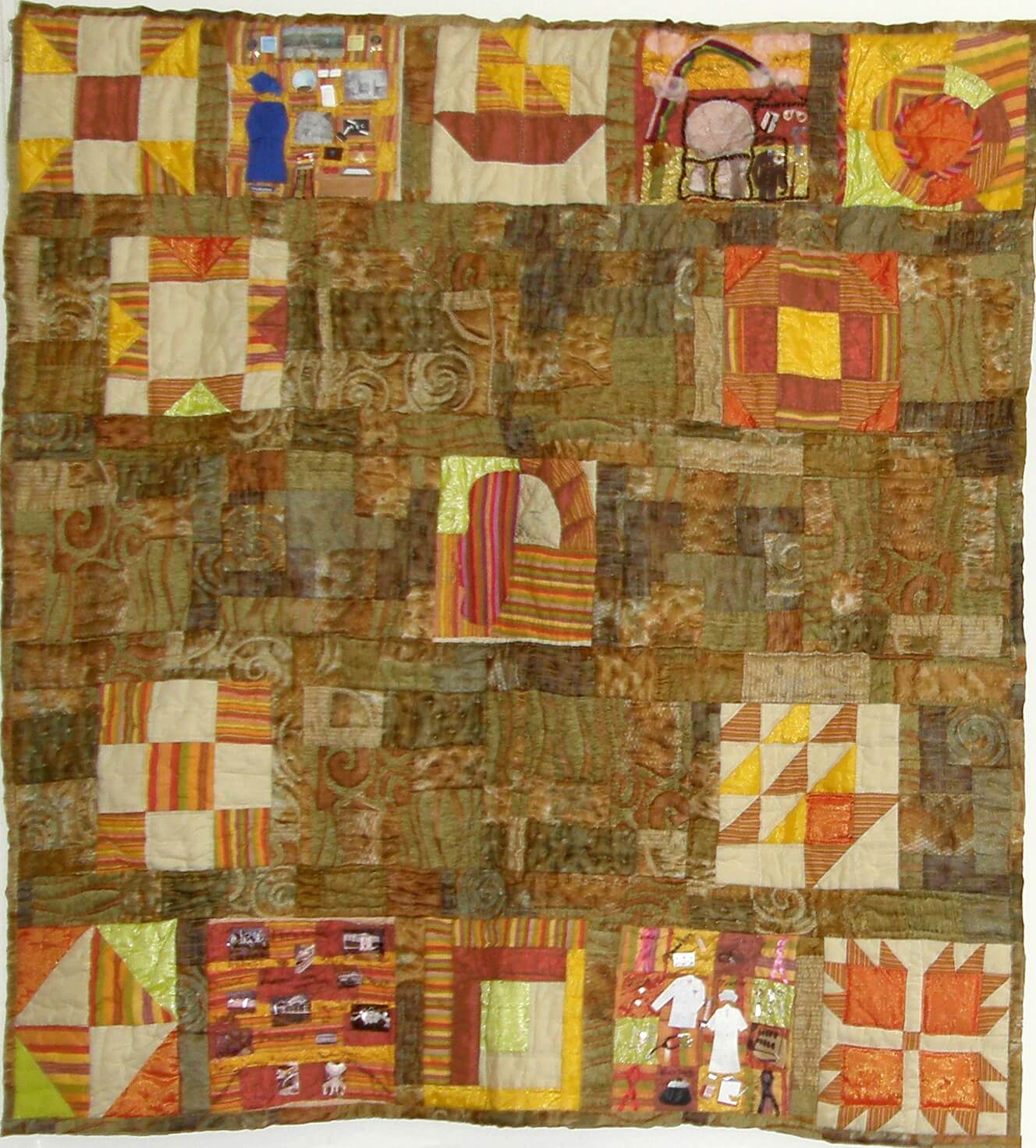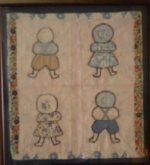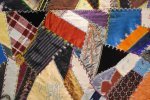African American Quilts
This post may contain affiliate links. Read the full disclosure policy here.
The history of African American quilts is nearly as old as the history of America. Long-ignored and conspicuously absent from many early accounts of American quilt history, African American quilting has become a growing area of study.
Skilled Black slave women on plantations and in other wealthy households also did the spinning, weaving, sewing and quilting in addition to many household duties. Their surviving quilts provide a unique history of their lives and culture.
One of those skilled quilters, Harriet Powers became known as the mother of African-American quilting (1837-1911). She was born in slavery, then after the Civil War she began exhibiting her quilts.
For a long time it had been commonly thought that slaves in the general plantation population didn't make quilts. Little time would have been left after the day's work for women to do their own sewing.
However, research has shown that slave quilters not only made quilts for the owner's family, they also made quilts for their personal use. Made from scraps, and heavily used, relatively few of those personal quilts have survived to be studied today.
Creativity and Improvisations
Like the pioneer quilters, early African American quilters were quite resourceful in finding and using "throw away" or discarded goods to use in their quilts. In addition to scraps from cloth used to make their clothes, slave quilters made good use of gunny, feed, flour, tobacco, and sugar sacks. The inner layer of quilts could be filled with old blankets, worn clothes that could no longer be mended, or bits and pieces of wool or raw cotton.
Quilting parties, similar to the quilting bee in the Middle and Far West, were important social events on the plantations and were enjoyed by men, women, and children. Some of these parties were elaborate affairs and included guests from other plantations. Such parties usually occurred on special occasions or at the end of the harvest season, and may have been promised as rewards work well done. More common parties were small impromptu events that occurred at the cabins of the slaves. In addition to the sewing, common activities at the parties were eating, drinking, singing, dancing, storytelling, playing traditional games, courting, and gossiping.
Slave women learned quilt patterns from their mistresses as well as from each other. They also developed ingenious original patterns based on elements from their environment. Some of the more popular patterns include Sawtooth, Drunkard's Path, Railroad Crossing, Tree of Paradise, Ocean Wave, Feathered Star, and Nine-Patch.
Quilts were still made for everyday use out of necessity. String quilts, in which strips of various fabrics were sewn together, then cut into blocks and made into a quilt, were a popular choice because they allowed quilts to be constructed of scraps that normally would be too narrow to be worth using.
Many stories and legends have been circulated about the role, if any, quilts may have had in the Underground Railroad. Unfortunately, researchers have found little actual evidence of codes in the quilt blocks or messages in quilts hanging on clotheslines.
After the Civil War, many freed-slave American women went to work in households as domestics or continued working on farms. It was still a difficult life of long days working from dawn to dusk. Those who were skilled in the making of quilts were able to continue making warm bedcovers for their family members as well as supplementing the family income by making quilts to sell.
Contemporary African-American Quilts
Like their counterparts in the 18th and 19th centuries, contemporary African-American quilters are inspired by the events, culture, artifacts, and people around them. While their quilts may share features with those of other times, places, and quilters, they also display characteristics unique to the African-American community and experience.
The Women of Color Quilters Network challenges the widely accepted belief that there is a standard African American quilting “style” or "tradition," and has developed exhibits of quilts showcasing the full range of African-American quilt making.
While it may be tempting to oversimplify the history of African American quilts as those made by slave women, or rural women quilting for their families, the reality is that African American quilts represent a diverse body of work by an ethnic group that spans all socio-economic levels, education, and geographic locations. Like all American quilts, African-American quilts vary from era to era, from region to region, and from one quilter to another.
A popular collection of contemporary quilts made by quilters in an isolated part of Alabama known as Gee's Bend illustrates a multitude of characteristics of American quilting that have been combined in a distinctly unique way. Intensely personal and inventive, the quilts and quilters of Gee's Bend provide not only important elements of the history American quilting, they also contribute to the history and heritage of Alabama.
Quilters of Color 2017 Display in New York
In celebration of Black History Month 2017, a stunning collection of quilts were displayed at the Manhattan Borough President's Office. The quilters share how their histories, travels, and experiences shape their art.
As more is learned about the history of African American quilts, it continues to be evident that the quilts produced from the Colonial period through the present are as varied and unique as the quilt makers themselves.




